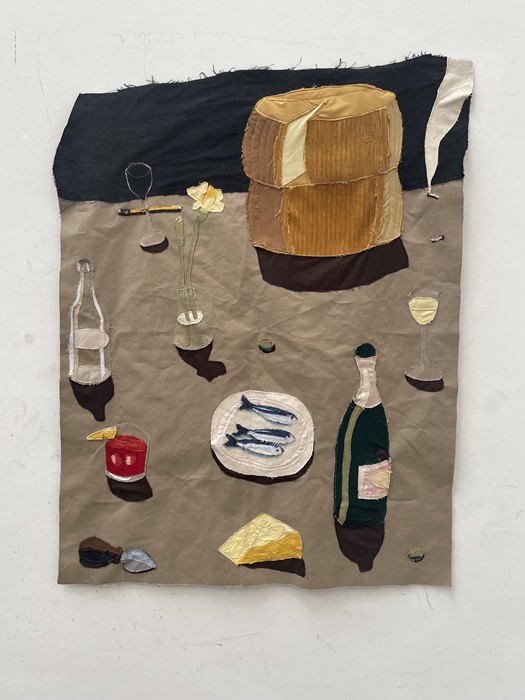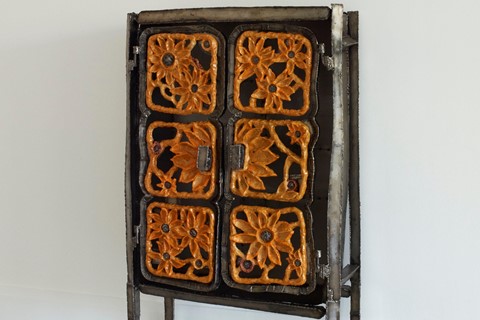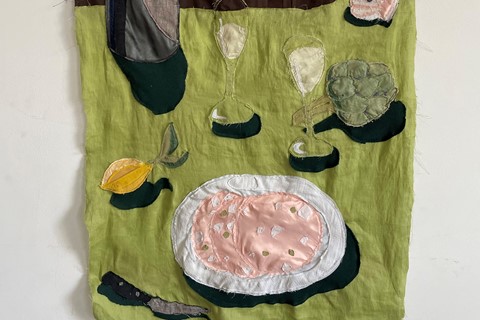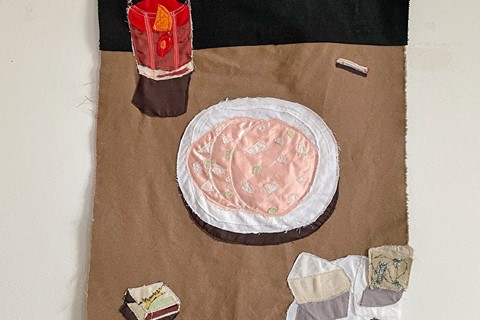The London-based artist’s practice centres on transforming discarded materials through craft
- Who is it? Andrew Pierce Scott is an artist and maker based in London, UK
- Why do I want it? With a practice that spans from metal to textile compositions, Scott’s works are a magical exploration of the possibilities of discarded, scrap materials
- Where can I find it? Select works are available via Tiwa Select and on commission
Who is it? With a BA majoring in Studio Art and Classics from Kenyon College, US-born artist Andrew Pierce Scott’s practice has long explored the potentiality of materials to transcend their assigned function and dimension through craft. But it was during his time working at the renowned Philadelphia-based furniture design workshop BDDW that he was shown the infinite possibility of “making” beyond design. “Through the research I was doing at BDDW in Philly I discovered people like Martino Gamper and Max Lamb,” he reflects. “It was this scene of very intense making, less like industrial product design, more just working with materials and experimenting.” Scott relocated to London to undertake his MA in Design Products at the Royal College of Arts – an opportunity to both further his personal practice and “to be closer to this scene of people that I’ve really been admiring.”
It was for one his last projects of his MA that Scott’s curiosity for scrap and discarded materials was piqued. “Being in London, I just started seeing all of the discarded oil barrels outside fish and chip shops,” he explains, “and I was working with really thin steel anyway. It became an interesting problem to solve… can I transform through craft these really flimsy pieces of what is effectively trash?” His practice became focused on decoding the potential in what is overlooked and then working through the materials – a continuous negotiation between their previous wear-and-tear and their future transformation into coffee tables, stools, and vases. “I still see the oil barrels on the street and think about them,” he laughs, “It’s kind of hard to separate them and their potential in my head.”
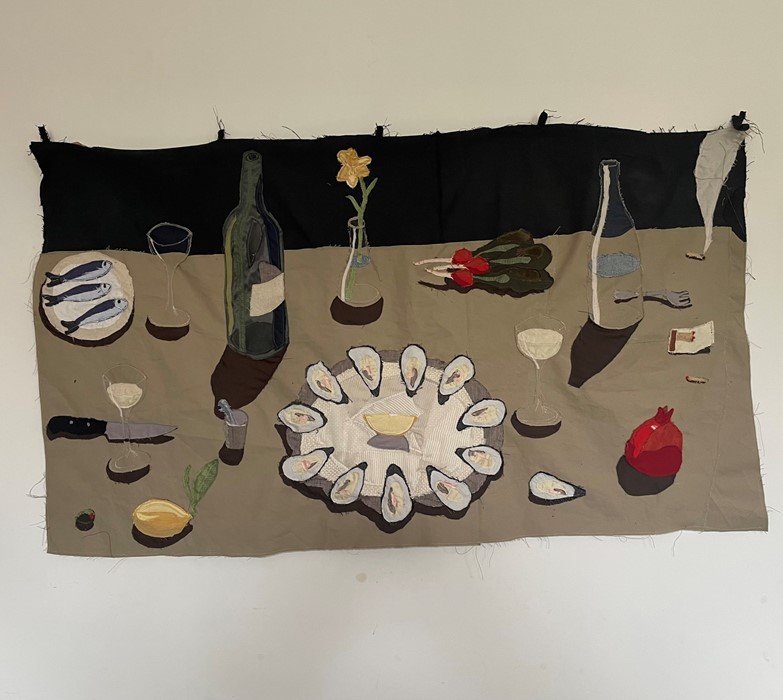
In a similar vein, his textile still-life compositions were born from amassing scraps of fabric discarded by students in RCA’s fashion programs. “It basically started as a procrastination during my finals,” he says, “I saw this scrap of fabric that looked like fish scales, another like a tabletop. And it grew from there.” Scott allows his imagination to be guided by the textures and colours of the scraps – and their potential to represent something completely different in an incongruous dimension.
Why do I want it? Scott’s craft is driven by a wonderous curiosity and respect for the past lives of discarded materials. Even more recent works, like his “candlestick figures”, continue to be made primarily from the off-cuts of other projects. “Instead of having infinite options at your disposal, you’re forced to work with what’s in front of you,” he explains of his interest for what’s been discarded, “you need to honour the material because you can’t force something else on it.” It’s a constant back-and-forth between how much tension the material can handle and what Scott wills it to be. Similarly, the materials bear the marks of their previous use which the artist must then weave into the new aesthetics.

A major stake of his craft is dimensionality – the possibility of his materials to be expanded or compressed beyond their original volumes and planes. For instance, his textile compositions are memories of meals, compressed into layers of scrap material. “For me it’s this combination of representing things that are in my head,” he says, “and then feeling and seeing the fabric. It can go in so many different directions.” If the rituals of food and shared meals are elementary to human connection, Scott’s flattening of such experiences sews into tangible memory the simple beauty of these moments.
Alongside his individual practice, Scott regularly collaborates with other artists “to overcome the shortcomings of [his] individual practice.” With Leo Kaspar – an artist working with glass and to whom he was connected via Tiwa Select in New York – he has made mobiles, scones, tables, and lamps which are a meeting of limits of each of their chosen materials and process. “Kaspar is bringing transparency and colour which brings a different haptic experience to the perceived solidity of metal work,” the artist explains. He has also worked with Natalia Triantafylli, whose practice is rooted primarily in ceramics, to build credenzas, dressers, and lamps. Just like with his own practice, in collaborating “there’s an element of chance, it’s not completely pre-ordained. It’s always in flux, which I like.”
Where can I find it? Select works are available via Tiwa Select and on commission.
